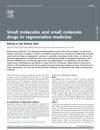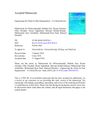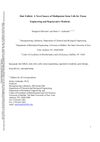Stem Cell Therapies in Basic Science and Translational Medicine: Current Status and Treatment Monitoring Strategies
March 2011
in “
Current Pharmaceutical Biotechnology
”
stem cell therapies embryonic stem cells adult stem cells induced pluripotent stem cells mesenchymal stem cells hematopoietic stem cells neural stem cells regenerative medicine tissue replacement biomedical imaging MRI PET SPECT reporter genes imaging agents ESCs ASCs iPSCs MSCs HSCs NSCs magnetic resonance imaging positron emission tomography single-photon emission computed tomography

TLDR Stem cell therapies show promise for treating various diseases but face challenges in clinical use and require better monitoring techniques.
The 2011 document reviews the state of stem cell therapies, detailing the potential, applications, and challenges of various stem cell types, including embryonic stem cells (ESCs), adult stem cells (ASCs), induced pluripotent stem cells (iPSCs), mesenchymal stem cells (MSCs), hematopoietic stem cells (HSCs), and neural stem cells (NSCs). It discusses the therapeutic promise of these cells in regenerative medicine and tissue replacement, their use in clinical settings such as treating blood disorders, cancers, and neurodegenerative diseases, and the challenges in clinical translation, including limited understanding of stem cell biology, technical difficulties, and the risk of tumor formation. The document also emphasizes the importance of biomedical imaging techniques like MRI, PET, and SPECT for monitoring stem cell behavior in vivo, and the development of reporter genes and imaging agents to improve tracking and diagnostic specificity. Despite significant progress in basic research, the clinical landscape for stem cell-based therapeutics is still in its early stages, necessitating further research and collaboration to overcome existing challenges and develop effective treatments.




